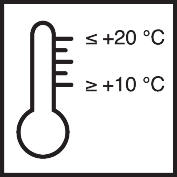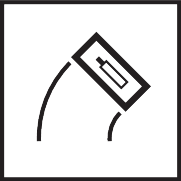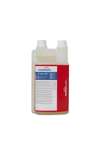Article No. 686134
High-build PU concrete mortar
Product specifications
On delivery
Mixture
The stated values represent typical product characteristics and are not to be construed as binding product specifications.
Field of application
- Mortar coating for areas subject to high chemical, thermal and mechanical loads
Properties
- High chemical resistance
- High mechanical resistance
- Water vapour diffusion capable
- Thermal resistance up to 130 °C
- Thermal shock load up to 180 °C (depending on system)
-
Preparation
-
Substrate requirements
Only concrete screeds and bonded screeds primed with Crete TF 60 or Crete FP are permitted substrates.
The substrate must be load-bearing, dimensionally stable, solid, free of loose parts, dust, oils, grease, rubber marks and any other substances that could interfere with adhesion. It must be primed so as to remove all surface pores.
The tensile strength of the surface of the substrate must be at least 1.5 N/mm² on average (smallest individual value of at least 1.0 N/mm²), and the compressive strength must be at least 25 N/mm².
Concrete max. 6 m% moisture Cement screed max. 6 m% moisture
-
-
Application
-
As a general principle, higher temperatures will reduce and lower temperatures will increase the times stated.
-
Working tools / cleaning
-
Gauge rake, trowel, scraper, mixer, compulsory mixer if necessary
-
More detailed information can be found in the Remmers Tool Programme.
Clean tools, equipment and splashed material immediately while fresh with V 101.
Take suitable protective and waste disposal measures when cleaning.
-
Storage / shelf life
-
If stored in unopened original containers in a cool, dry place and protected from frost, at least 9 months for component A, at least 12 months for component B and C and at least 18 months for component D.
-
Usage
-
See application examples
-
-
Application examples
-
EM
-
C
Using a suitable gauge rake, immediately distribute the material evenly. Then, without waiting, use a trowel or scraper to level off the material again.
18 - 24 kg/m²
-
-
General information
-
Unless otherwise specified, all of the values and application rates given above have been determined under laboratory conditions (20 °C) using standard colours. Slight deviations from these values may arise if the product is worked with on site.
When coating continuous surfaces, only use materials with the same batch number as slight differences in colour, gloss and texture may occur.
To delimit the coated surface, sufficient anchoring cuts must be made (width and depth of the cuts is twice the thickness of the coating system).
When levelling off the material, make sure that a pore-free surface is produced.
The resulting surface texture is strongly influenced by the conditions on site and the application method. Therefore, surface texture is not covered by product liability.
PU concretes in general are functional floor coverings with low requirements with regard to appearance and are generally not colour-fast.
Even if the flooring is correctly installed, differences in colour, marks made during application, streaking and slight formation of pools cannot be excluded.
Due to the short reaction time, the coating operation must be well planned and prepared.
Low thickness and low temperature can affect the visual effect of the finished surface.
Abrasive mechanical loads leave traces of wear.
Exposure to vehicles with metal or polyamide tyres as well as dynamic concentrated loads can cause faster wearing of the coating.
In case of repairs on the surface or working up to existing surfaces, there will be a visible transition in appearance and texture.
The resistance to chemical substances must be assessed with regard to the temperature of the medium (see chemical resistance list).
Further notes on working, system construction and maintenance of the listed products can be found in the latest Technical Data Sheets and the Remmers system recommendations.
-
-
Disposal instructions
-
Larger quantities of leftover product should be disposed of in the original containers in accordance with the applicable regulations. Completely empty, clean containers should be recycled. Do not dispose of together with household waste. Do not allow to enter the sewage system. Do not empty into drains.
-
-
Safety / regulations
-
For professional users only!
Further information concerning safety during transport, storage and handling as well as on disposal and ecology can be found in the latest Safety Data Sheet.
-













